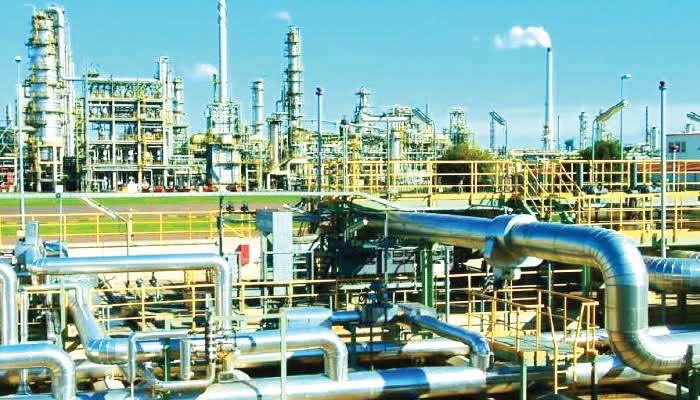Dangote Refinery bolstered its supply of imported crude oil from the United States by dispatching a second shipment of US light sweet crude oil to Nigeria for delivery to the refinery on Friday.
This is coming as indications emerged at the weekend that Nigeria’s efforts to raise crude oil production continued to yield results during the February circle, with output for the month rising by approximately 60,000 bpd during the month.
It was reported that the vessel, Otis, which loaded about 850,000 barrels of WTI Midland in Houston last week, was signaling Lekki in Nigeria as its destination, according to Kpler and LSEG ship tracking.
It is estimated to reach the country around mid-March.
The vessel was chartered by Vitol, according to data sources and a trader.
The first shipment of two million barrels of US crude on the very large crude carrier, Gem No. 1, also chartered by Vitol, was nearing Nigeria and is expected to discharge next week.
The refinery, Africa’s largest, with a nameplate capacity of 650,000 barrels per day, was built on a peninsula on the outskirts of the commercial capital, Lagos, by the continent’s richest man, Aliko Dangote.
The refinery began buying crude in December last year, and the Nigerian National Petroleum Corporation Ltd. (NNPCL) has been the main supplier.
The refinery had issued tenders to sell two fuel cargoes for export, a tender document showed, and trading sources with knowledge of the matter told Reuters earlier this month.
Bloomberg reported in January this year that Trafigura Group sold two million barrels of WTI Midland to Dangote Refinery for end-February delivery.
This is the first time that the giant refinery has purchased non-Nigerian crude, traders said.
Trafigura is a multinational commodity trading company headquartered in Singapore, with major hubs in various locations, including Geneva, Houston, Montevideo, and Mumbai.
Relief as Nigeria Nears OPEC’s Renegotiated 1.5 Mbpd Quota
Meanwhile, indications emerged at the weekend that Nigeria’s efforts to raise crude oil production continued to yield results during the February circle, with output for the month rising by approximately 60,000 bpd during the month.
Although the monthly oil production report by the Nigerian Upstream Petroleum Regulatory Commission (NUPRC), usually released in the second week of the month, had yet to be officially announced, a survey of shipping data arrived at the additional volume.
“Among those with higher output, the second-biggest gain of 60,000 bpd came from Nigeria, the survey found, as some crude was processed in the new Dangote refinery and exports rose,” it said.
In January, Nigeria’s oil production increased to 1.42 million barrels per day, representing the highest production level since March 2021, when output was about the same 1.42 million bpd.
But with the addition of condensate, the commission said Nigeria’s oil production rose to 1.64 million bpd in January 2024 from 1.55 million bpd in December 2023.
This comes as some relief for Nigeria, which is currently in the middle of a foreign exchange shortage crisis, partly occasioned by the country’s prolonged inability to raise oil output from where it gets up to 90 percent of its FX earnings.
If the 1.42 million bpd is added to the tentative 60,000 bpd shipping data figure, this would total 1.48 million bpd, and Nigeria could be just about 20,000 bpd away from meeting the 1.5 million bpd Organisation of Petroleum Exporting Countries (OPEC) quota for 2024.
But it is still below the daily oil production benchmark of 1.78 million barrels in Nigeria’s 2024 budget, although that also includes condensate, which is exempted from OPEC calculations.
Last November, OPEC granted Nigeria a quota of 1.5 million barrels per day (bpd) after prolonged negotiations spanning several days, a figure considerably lower than what Africa’s largest oil producer had anticipated. Angola exited the group following a dispute with OPEC over its allocated quota at the time.

